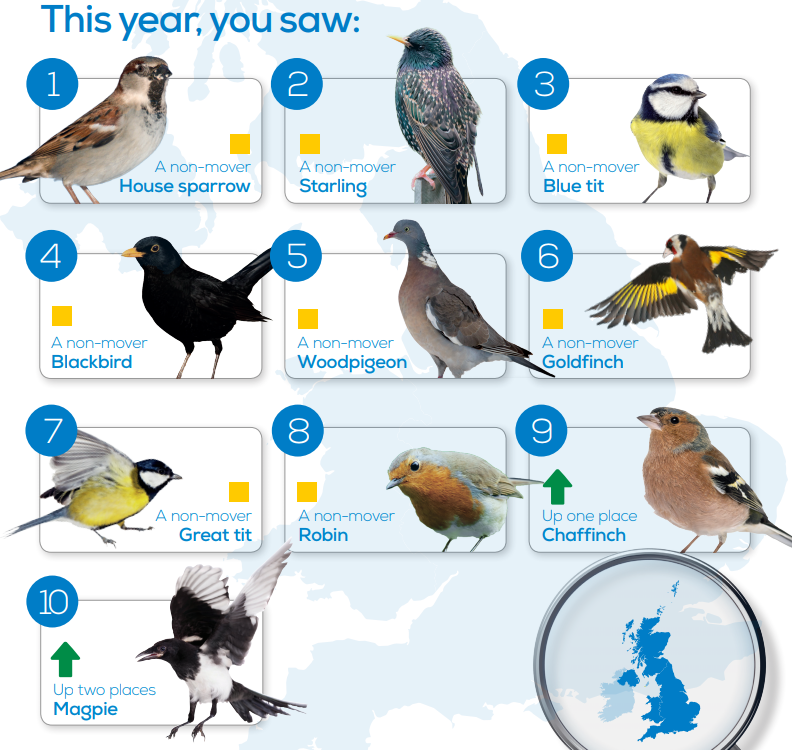How Britain’s backyard bird feeders are shaping evolution

Half of all British households cater for birds in their gardens. Image: REUTERS/Tony O'Brien

Get involved with our crowdsourced digital platform to deliver impact at scale
Stay up to date:
Future of the Environment
Britain’s love affair with garden birds is reshaping its avian population.
Several species have grown in number and overall diversity has increased, according to new research that explores the impact of the nation’s obsession with bird feeders. With at least half of all British households catering for the birds in their gardens, the report enhances our understanding of the ecological and evolutionary repercussions.
“There is a multi-billion dollar global industry dedicated to feeding wild birds in residential gardens,” researchers, including Kate Plummer and Kate Risely, wrote in the paper. “We found that the number of feeders provided in a garden had a greater influence on species richness and diversity than either winter temperature or local habitat.”

Gardens account for around one-quarter of all urban land cover in Britain, and support 133 types of bird, more than half the country’s species. An uptick in the range was one of the key findings, with birds that previously rarely appeared in gardens now commonplace. In contrast, no population increases were seen in species that do not visit feeders.
Two of the biggest beneficiaries were goldfinch and wood pigeon, with sightings jumping to more than 80% from less than 20% in 1973. In the 1970s, bird feeders were dominated by house sparrows and starlings, and they are still among the most frequently seen, according to the RSPB’s Big Garden Birdwatch 2019.

While this research focused on the UK, bird feeding is among the top hobbies around the world, and is even marked with an official month in the US. Watching birds is now one of the world’s most popular pastimes, according to charity Birdlife International. The charity notes that in Canada, people spend more time birdwatching than gardening and in China watching birds as a hobby is growing by 40% each year.
The wider ramifications are important as urban population increases and the future of many wild animals comes to depend on how they can adapt and thrive in city environs. The World Economic Forum estimates that almost 70% of the world’s population will live in cities by 2050, and its Global Future Council on Cities and Urbanization explores ways to embrace this shift.
How is the World Economic Forum supporting the development of cities and communities globally?

As backyard bird feeding becomes more popular, there’s also been an increase in unforeseen consequences, including the transmission of some diseases, like trichomonosis, which can spread rapidly at bird feeders if they haven't been disinfected. The disease has been linked to a dramatic decline in greenfinch and chaffinch populations in the past two decades.
There’s the potential jump in populations of other animals, too, when they steal the feed, like squirrels and rats, and those that feed on the birds themselves, like cats and bigger birds.
And with the pastime continuing to take flight, understanding the changes it might bring about is ever more important.
While the report underscored the positive influences including better survival rates among birds that visit feeders, it also touched on negative ones like disease transmission and poor nutritional quality of food supplements compared with other sources, saying that further investigations are needed.
“Individual decisions by homeowners to feed wild birds can impact cumulatively upon bird communities across large spatial scales,” they wrote. “This growing, global phenomenon has profound potential to influence biodiversity further and should not be underestimated.”
Don't miss any update on this topic
Create a free account and access your personalized content collection with our latest publications and analyses.
License and Republishing
World Economic Forum articles may be republished in accordance with the Creative Commons Attribution-NonCommercial-NoDerivatives 4.0 International Public License, and in accordance with our Terms of Use.
The views expressed in this article are those of the author alone and not the World Economic Forum.
Related topics:
The Agenda Weekly
A weekly update of the most important issues driving the global agenda
You can unsubscribe at any time using the link in our emails. For more details, review our privacy policy.
More on Future of the EnvironmentSee all
William Austin
April 17, 2024
Victoria Masterson
April 17, 2024
Rebecca Geldard
April 17, 2024
Johnny Wood
April 15, 2024
Johnny Wood
April 15, 2024






